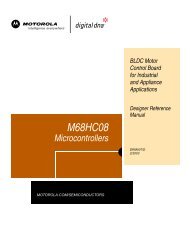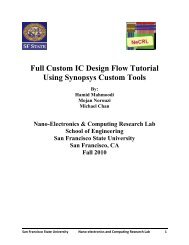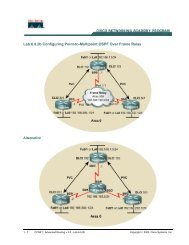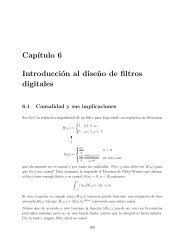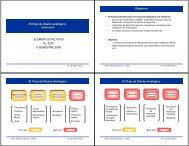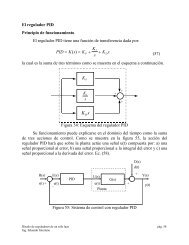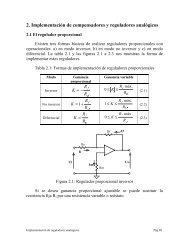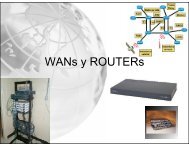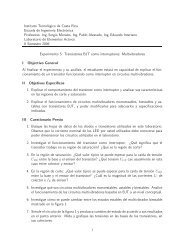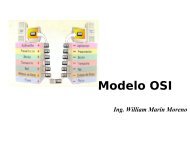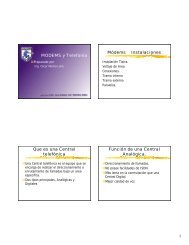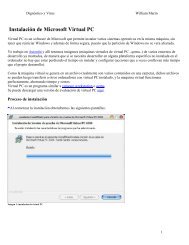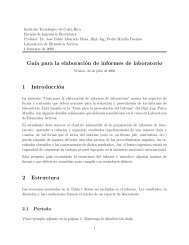Chapter 6 Experimental Mapping Method
Chapter 6 Experimental Mapping Method
Chapter 6 Experimental Mapping Method
You also want an ePaper? Increase the reach of your titles
YUMPU automatically turns print PDFs into web optimized ePapers that Google loves.
190 ENGINEERING ELECTROMAGNETICS<br />
FIGURE 6.12<br />
See Probs. 5, 6, and 14.<br />
6.10 Conductors having boundaries that are curved or skewed usually do not<br />
permit every grid point to coincide with the actual boundary. Figure<br />
6.16a illustrates the situation where the potential at V 0 is to be estimated<br />
in terms of V 1 ; V 2 ; V 3 ; V 4 , and the unequal distances h 1 ; h 2 ; h 3 , and h 4 .<br />
…a† Show that<br />
V 1<br />
V 0 ˆ <br />
1 ‡ h 1<br />
1 ‡ h ‡<br />
1h 3<br />
h 3 h 4 h 2<br />
‡ <br />
1 ‡ h <br />
4<br />
h 2<br />
V 4<br />
<br />
<br />
V 2<br />
1 ‡ h 2<br />
1 ‡ h ‡<br />
2h 4<br />
h 4 h 4 h 3<br />
<br />
1 ‡ h <br />
3<br />
h 1<br />
1 ‡ h ; …b† determine V 0 in Fig. 6.16b:<br />
4h 2<br />
h 3 h 1<br />
V 3<br />
<br />
1 ‡ h <br />
3h 1<br />
h 2 h 4<br />
6.11 Consider the configuration of conductors and potentials shown in Fig.<br />
6.17. Using the method described in Prob. 10, write an expression for V 0



